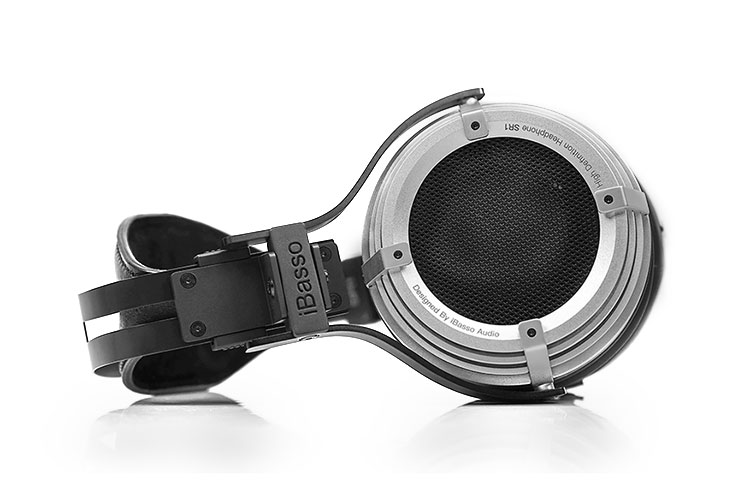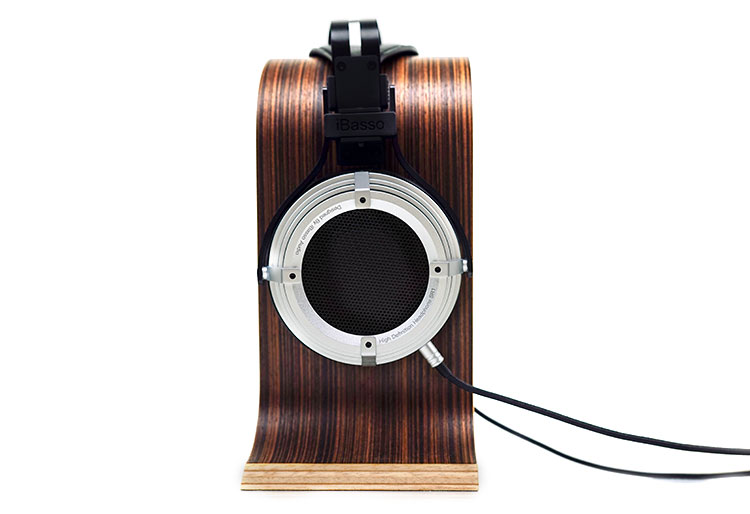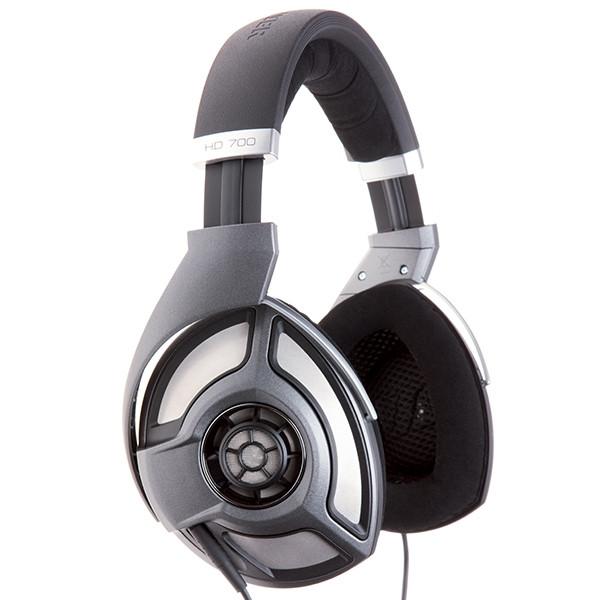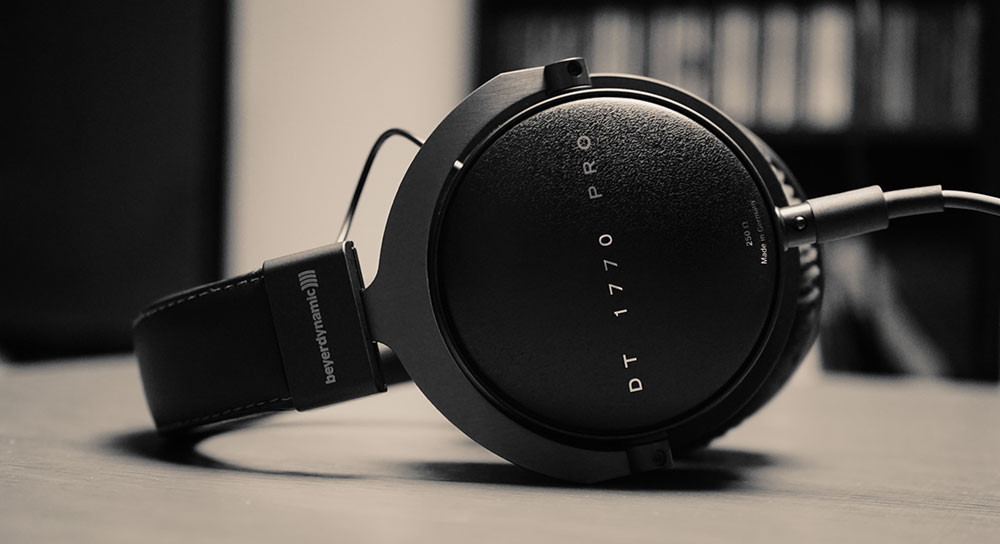Sound Impressions
Summary Stock Pads
I find the tuning impressive on the SR1 but it also falls slightly outside the usual letter-based signature classifications. It is not quite V-shaped despite the slight dip in the mids, there is simply not enough sub-bass prominence and sharp treble contrast to fit the usual V-shaped requirements.
Instead, I would define it as having a low-end solidity about it and a gradual but linear slope into the mids and down at its lowest point around 2-3k before it has a mild bump in the lower treble and some decent elevation again closer to 8-10k for air.
Thus, the SR1 is smooth and with plenty of body but overall quite a balanced sound signature. It has more of a rich and euphonic tone to its timbre and vocal pitch than anything lean or analytical. A lot of that is drawn from the relatively high mid-bass emphasis and slow drop into the mids that take that warmth with it.
You can accentuate that warmth or cool it down a little depending on your source and amp also. It does seem to respond quite well to any tonal coloring in your setup.
It also scales quite well with good quality amps delivering a snappier sound to the SR1. I did notice that weaker sources tended to make the SR1 treble a bit lean and bright and the low-end soft and ill-defined.
With a good amp and DAC pairing the SR1 delivers excellent levels of resolution and an above-average soundstage for what I would loosely consider a semi-open headphone (more closed in character with the stock pads if you ask me).
Overall, a relatively forgiving but powerful sound signature that works very well indeed for modern rock and pop but is less of an analytical beast or a ‘peppy’ mid-range performer like the HD600.
Summary PT1 Pads
The PT1 pads are a fairly noticeable change in the overall presentation. I would say you get a far more linear and slightly more open-sounding signature compared to the warmer more dipped stock pads.
You do lose some of that bass heft with just some marginal mid-bass warmth but on the flipside, you get a beautifully neutral transition from bass to mids. Gone is the gradual drip from a higher mid-bass into the mids. The coherency of the SR1 takes a big leap forward for me with the PT1 pads.
You still get a marginal dip from 1-4k so it is still not mids forward headphones but much less dipped than the SR1’s stock pads with more recessed delivery. That pitch-dependent stock pad performance is more even sounding with the PT1 pads.
The PT1 pads treble performance also has a slight tweak. It sounds a little less laid back than the stock pads and more balanced in its tuning. Both the peaks at 4-5k and 8-10k seem a little more even in dB amplitude and inject more odd-harmonic emphasis into the timbre of the SR1 over the richer but darker stock pads.
Staging
With the stock pads, you do get excellent depth and a slightly relaxed level of headroom or treble extension. The stock pleather pads do create a slight closed-headphone or darker feeling to the SR1’s soundstage.
Compared to something like the DT 1770 PRO, I also find the staging to be just a little more intimate, possibly due to the SR1’s more forward mid-bass and lower-mid performance on the SR1.
Mind you, even with that slight mid-range dip pushing back vocals in their positioning I still find the SR1 soundstage to be very competent indeed. Instrumental separation is much better than I expected on the SR1, even with that mid-bass and lower-mid forwardness and warmth.
The PT1 pads will reduce the low-end power slightly but you will find less of a midrange dip and a more open midrange sound. It also has a little more top-end forwardness and a slightly cleaner percussion presence.
Bass
The SR1 has an interesting tuning on the low end. It does not have an obvious sub-bass bias like Beyer’s DT1170 Pro but it is nevertheless very solid and planted sounding. Part of that is the punch and warmth delivered from an elevated midbass bias and a moderate elevation right at the very low end of the FR around 20-40Hz.
In between, there is a slight dip in the measurements so it is not a linear tuning, suggesting a little bit of separation which, compared with the DT1770 Pro, might explain why it is not as dominating as it could have been on the SR1.
It does hit hard when it needs to but the most pleasing aspect of the SR1 is not an always-on basshead experience but how it adds and lovely weighted feeling to the harmonic balance of key instruments such as bass guitar, double-bass, and kick drums. They sound wonderfully weighted but not overcooked.
PT1 Bass
The perforated bass will reduce the power and warmth of the SR-1 low-end though not in the sense it is a lean sound. Far from it, it is still a solid performer just a lot more linear and balanced sounding for me.
The PT1 pads reduce that mid-bass hump and reduce the sub-bass prominence by a few dB. It feels less exaggerated but no less detailed and critically remains quite flat and neutral when transitioning into the mids.
Mids
From 100Hz to the lower-mids around 500Hz the SR1 definitely delivers a bit of a hump so you will get plenty of warmth from the SR1. However, the tuning continues to dip down to 1K in a slow but linear fashion so I do not find the signature terribly congested.
A little thick perhaps and more forward in its staging position than the rest of the midrange. That does mean guitar work, both rhythm and bass, have a warm and rich sounding timbre with a slight even-harmonic smoothness but also plenty of power and a more than a decent level of PRaT.
Some might look for a little more upper harmonic influence just to tweak for a crisper attack on acoustics timbre. I suspect the PT1 pads here might a good option if you like your instrumental timbre a little lighter and cleaner.
Vocal positioning and presence on the SR1 will depend a little on their pitching. Overall, I would say they are neutral to slightly dipped in positioning but definitely not veiled or lacking in texture and detail.
The timbre remains smooth to slightly warm for low-end male vocals and a little cleaner but still quite euphonic for females. You will not find a hint of sibilance on the SR1 vocal performances unless you dramatically underpower it.
Here, I find a poor level of power sucks the weight from the SR1 and makes the treble quite lean which introduces a slightly harsh aspect to its vocal performances.
PT1 Mids
There is less of a hump from 500Hz to 1k on the PT1 SR1 alternative. It’s probably the most impressive aspect of the change to the perforated pads. The lower-mids lose a bit of that rich warmth from the stock pads but sound marginally less forward and dominating which I know a lot of people will prefer.
You do lose a tiny bit of power from the new linear low-end tuning but in return, you do gain a bit more instrumental clarity and openness which is a nice compromise.
Vocals also benefit from the new pads. There is less of a 1-3k dip with the PT1 pads, in fact, I would say the FR is quite neutral which gives female vocals a bit of a lift and more presence. The slightly flatter lower mids and dropping of the mid-bass presence also allow male vocals a bit more space.
Treble
Upper mids to lower-treble around 4-5k have a little bump which I quite like. It prevents the SR1 from sounding too dark and boring with decent but not pervasive percussion presence and essential air for higher-pitched vocals to shine when required.
The SR1 tuning peaks again from 8-10k but the amplitude is in line with the mid-bass hump and close enough to the lower-mids to provide some important levels of contrast but not enough to sparkle or to sound peaky.
This is a treble tuning that is more on the relaxed side of things but just stops short from sounding dark. Compared to the likes of the HD600, it will sound a shade darker on the top end but it also sounds a bit smoother, wetter even, and with a better treble body also.
PT1 Treble
The PT1 pads do not change the fundamental boosts at 4-5k and 8-10k but they do even them out a little with slightly less 8k emphasis for me compared to the stock pads and a little more in balance with the lower treble 4-5k boost.
Both peaks are a little higher now than the mid-bass hump which will give a more perceptible forwardness and energy to the SR1 top-end but it still sounds quite smooth to my ears. The PT1 pads do a good job bringing in a little more headroom and perceived extension without making it lean and brittle sounding.
Synergy
Efficiency
The iBasso SR1 is rated at 22Ω and 10dB SPL. Do not let that relatively easy-looking spec rating fool you, however. The SR1 can scale and does need decent power to sound at its best. It is not so much that it is ‘hard to drive’, that 22Ω rating and relatively efficient SPL do mean it will get loud quickly enough on moderate DAP sources.
However, is not really until you start pushing out some quality signal with decent power that you start to hear how well the SR1 can scale with a good amp. More than that, the choice of setup will influence the sound you hear on the SR1.
Budget DAPs
For example, with a starter budget DAP such as Sony’s A35 the treble was incredibly lean and the bass super soft and not terribly well defined. You could be forgiven for thinking the SR1 was a decidedly V-shaped consumer-level headphone.
Mid-range DAPs
With the DX200 using Amp 1, I found the signature to be far more balanced and even sounding and certainly more resolving than the little Sony A35. However, the tuning actually sounded a bit too flat for me, and that nice low-end punch was a bit lacking with EDM.
iBasso’s Amp 8 is a much better solution going balanced with the SR1. The presentation is punchier and more powerful sounding and probably represents the best you can get from an all iBasso setup.
Summit-fi DAPs
With the Lotoo PAW Gold Touch, you get a punchier sound but also a little more upper harmonic presence. It is clean, snappy, and very detailed sounding with the SR1. That 500mW load does a really good job of driving the SR1 well.
Although not as powerful, the Sony 1Z’s tuning on the low-end and the slightly softer treble is a better pairing for EDM and for anyone who likes a slightly wetter acoustic tone to their listening with the SR1. Between these two I would grab the Lotoo. It just sounds better for dynamic range and delivers a bit more headroom and air to the SR1’s soundstage.
Desktop Amps
Auris HA-2SE
I absolutely love the SR1 with the Auris HA-2SE tube amp. The power is not too much at 1W into Ω, the tonal balance is relatively neutral in positioning but the timbre is rich, smooth and positively euphonic at times without shelving down the treble to get there.
The SR1’s top-end is still quite extended and detailed but it takes on a buttery smooth delivery that I find very addictive for electronic genres.
Burson Play
If the HA-2SE is a little on the pricey side then a fantastic pairing for not so many greens is the Burson Play with the Classic opamp section. This is a Class A amp with up to 1W into a 32Ω so plenty of power there for the SR1 though the background is not quite as black as the HA-2SE with the SR1. You have to remember this is still a 22Ω headphone.
The sound from this pair is beautifully smooth in timbre but punchy in the low-end and just a slight hint of dryness compared to the full HA-2SE tube setup but not hugely so.
The V6 Classic opamps are naturally warm and liquid-like, to begin with so it rarely delivers a spikey and hard sound. Instead, you get a very balanced presentation and plenty of headroom in terms of current that really negates the need for any 4.4mm or XLR balanced alternative pairing.
Select Comparisons
All comparisons were done with a mix of the Auris HA-2SE tube amp, Burson Play (Classic opamp) solid-state desktop amp, and the Chord Qutest DAC with a mix of FLAC 16BIT/44/1k tracks and DSD64 alternatives using Foobar and JRiver.
Sennheiser HD600
$299
Technical
Sennheiser’s almost timeless classic, the open-back full-sized HD600. For those slightly less than familiar, the HD600 is a 300Ω and 97dB SPL-rated circumaural headphone released way back in 1997. It is still selling strongly to this day with a remarkably solid price-to-value performance.
On the outside, the SR1 are a much stronger but heavier headphones. At 430g versus 260g, the HD600 is a much lighter headphone but the build quality I have always found to be just fair with its heavy use of marbled plastics.
And to tell you the truth, I actually find the Sr1 the more comfortable to wear despite the additional weight. At least for the first hour or so.
The lateral clamping of the HD600 is initially more perceptible and the velour stock pads push in on my ears compared to the SR1 pads which clear my ears. The longer they are worn the lighter weight of the HD600 starts to have its advantages.
Performance
The HD600 is a much more mid-centric and more neutral sounding headphone than the SR1. For classic rock, the HD600 excels with an instrumental timbre that is snappy sounding with a good harmonic balance.
Bass/Mids
The SR1 is a little more dipped in the mids and not quite as balanced but it does have more depth and power in its bass performance so it staging-wise it will sound the slightly bigger of the two.
The better bass fundamental adds a bit more meat on the bone so to speak with a little more lower-midrange instrumental body and authority compared to the slightly lighter more energetic tone of the HD600.
Vocals/Upper Mids
Vocals on the HD600 follow a similar pattern with excellent clarity and a slightly lighter timbre compared to the warmer and richer even-harmonic balanced of the SR1 mids.
Upper mids on the HD600 are not quite as dipped as the SR1 so percussion also sounds a little more energetic and snappier. The SR1 is just a touch more muted sounding but injects a little more smoothness and body into its percussion timbre.
Treble
Both have a slight bias for an upper treble bias over a peppy lower treble though I find that tiny dip on the HD600 around 5k to be the exact opposite on the SR1 which has a more of a bump. That combined with the upper treble elevation produces a little more body on the SR1 treble compared to the HD600.
I still enjoy the treble on the HD600 though, it is still an enjoyable balance for me with good energy and it adds some nice snap to its acoustic timbre. Of the three compared the HD600 really comes closest to what I call a true competitor to the SR1, just a slightly different flavor.
Sennheiser HD700
$749
Technical
I call it the black sheep of the Sennheiser family because I could never really figure out where it sat. Pricing in the last year or two was very volatile from $999 down to under $500 before stocks ran out. Sennheiser still has the HD700 listed for $749.95 on their website though none of the major retailers are selling it anymore.
The HD700 is a 150Ω and 105dB SPL-rated headphone. It is designed as an open-back circumaural or full-sized headphone with similar styling to the HD800.
Compared to the SR1, the 270g HD700 is much smaller, much lighter, and comfier on the head with a nice pressure balance. The HD700 clears the ear wonderfully well also with those shaped low-profile pads.
Performance
To be honest, the HD700 tuning is all over the place compared to the SR1. The SR1 just sounds a bit more balanced than the HD700 with a far better low-end presence and weighting, a richer and warmer timbre, and a smoother treble.
Bass
The HD700, by contrast, has a roll-off beyond 100Hz that is more extreme than the SR1 robbing it of a solid bass fundamental instead of giving it a limper mix of mid-bass warmth and punchiness but without power.
Lower mids timbre on both is relatively warm but without that solid bass fundamental the HD700 lacks body so guitar work doesn’t have the same level of authority despite the more than decent levels of clarity.
Mids
My biggest problem is the dip in the mids on the HD700. Both have a dip from 1-4k but the HD700’s more extreme 5-7k combined with the lack of bass weight just makes it sound too lean, too harsh, and robs the vocals of some naturally pleasing even-harmonic balance.
The SR1 is not hugely forward but the vocals are far more euphonic and richer sounding by comparisons and much more pleasurable to listen to.
Treble
The Treble is ‘peppy’ on the HD700 but more centered on lower treble presence around 6-7k than upper treble sparkle and extension. The contrast between the mids dip and lower treble is marked, much more so than the gentler and smoother sounding SR1 treble rise and dips.
As a result, the SR1 treble sounds a lot more coherent and even sounding albeit a little darker also. It also has more body, a wetter attack, and less of a splashy spikey nature to it than the HD700.
Beyerdynamic DT1770 Pro
$599
Technical
The DT1770 Pro is a full-sized circumaural closed-back headphone and is pitched more towards the studio market but has quite a following in the audiophile community also. It is rated at 250Ω and 102dB SPL and priced fairly close to the SR1 though at times I have seen it dip below $499 also.
Like the SR1 the DT1770 Pro is a solid build with a detachable cable system though there is more use of plastics in the DT1170 Pro than the SR1 such as the cups. It is a little lighter than the SR1 at 388g though on the head the pressure balance is quite different.
The headband does a decent job of dissipating the pressure but there is far less on top than on the sides compared to the SR1.
The SR1 is the comfier of the two overall because of that better pressure balance. However, the closed nature of the DT1770 Pro does a much better passive isolating job than the SR1 for external noise.
Performance
The major difference between these two is the low-end up to around 200Hz. The DT1770 Pro has a bit more sub-bass depth and power than the SR1 and will sound the more planted of the two up to around 80-100Hz. The difference will be even more emphasized with the PT1 pads which even out the bass response of the SR1 a bit more compared to the stock pads.
Bass Tuning
The SR1 has a little bit of roll-off over the same 20-80Hz range by comparison though by no means bass light. Instead, the SR1 has a bit more of a peak at 100Hz injecting a bit more warmth and mid-bass punchiness than the DT1770 Pro.
The DT110 Pro then dips massively at 200-400Hz and rises again from 400Hz to 1k sucking a bit of warmth and meat out of instrumental timbre. Primarily this is for monitoring the low-end in the studio more than audiophile sensibilities. That ‘break’ provides plenty of separation from between the bass and the mids on the DT1170 PRO.
Mids
The SR1 has more of a gentle linear slope and carries a bit more warmth into the lower mids. Its instrumental positioning is closer and the timbre is a touch warmer than the DT1770 Pro as a result.
Vocals are much the same on the two headphones with the SR1 a closer in positioning, especially for male vocals around 1k or lower and also delivering a slightly smoother warmer tone. DT1770 Pro vocals are more neutral in both positioning and timbre.
Treble
Both have north-of-neutral treble responses but not a response that I find particularly harsh or peaky overall. Both have a minor lower treble peak followed by a more focused upper treble presence around 8-10k.
If anything, the DT1770 Pro has a bit more of a lower treble peak around 5-6k than the SR1 which in turn has a slightly more energetic 8-10k but it is not a night and day gap.
What you will find is the DT1770 Pro’s lack of lower mids instrumental timbre warmth allows that treble elevation to infuse just a little more odd-harmonic presence whereas the SR1 has a bit of a smoother harmonic balance.
Thus, the treble timbre on the SR1 is a little wetter and with a better body than the DT1770 PRO’s harder and leaner-sounding top-end.
Our Verdict
The SR1 is a very refined dynamic driver headphone offering from iBasso. Too bad it is only 500 units because I find the SR1 to be a highly competitive alternative to the plethora of planar magnetic headphone offerings in the market at a similar price point.
It is built well, balanced quite nicely on my head for a fairly heavy headphone, and delivers a tuning that works with quite a wide range of genres.
Caveats? That ultimately depends on your point of view and what you want to do with the SR1. It needs a quality amp, regardless of the impedance and SPL rating it can scale well and it does sound better with a good desktop amp or a powerful DAP. A weak source robs it of definition and treble body and ultimately produces a harsher sound.
The second point of view is those stock pleather pads. They do make it sound a touch warmer and more closed in. Some people love that sound and it has an endearingly smooth sounding charm to it.
Switching to the PT1 pads you get a much more linear signature with less bass weight, a more open midrange, and a touch more treble forwardness. It still retains a beautifully sweet sound and opens up the SR1 to those who require a little more mids and vocal presence and a more controlled low-end.
Apart from that, the SR1 is an excellent performer and honestly, I was not expecting a freshman offering from them to sound this good.
iBasso SR1 Specifications
- Transducer Type: dynamic
- Operating Principle: semi-open
- Frequency Response: 3Hz-40kHz
- Sensitivity: 108dB at 1kHz
- Impedance: 22 ohm
- Rated Power: 50mW
- T.H.D.: <1% (at 1kHz/1mW)
- Plug Size: 3.5mm gold-plated
- Cord Length: 1.8m
- Weight: 420g without cable







